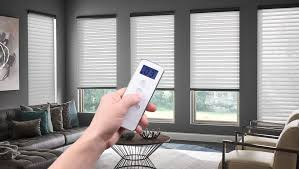The window covering industry has witnessed significant technological advancements in recent years, transforming the way blinds, shades, and shutters are manufactured, sold, and operated. Central to this transformation is the expanding role of information technology (IT) in various aspects of the industry. From automated production processes to smart home integration, IT has become an indispensable component in the window covering sector, revolutionizing the way businesses operate and customers experience their products. This article explores the evolving role of IT in the window covering industry, focusing on blinds, shades, and shutters.
Streamlined Manufacturing Processes: Information technology has revolutionized the manufacturing processes of blinds, shades, and shutters, making them more efficient and cost-effective. Automated systems, powered by IT solutions, enable precise measurements, cutting, and assembly of window coverings, reducing human errors and improving production speed. Computer-aided design (CAD) software allows manufacturers to create intricate designs and patterns, catering to diverse customer preferences. Furthermore, advanced inventory management systems powered by IT enable manufacturers to optimize stock levels, reducing wastage and ensuring timely delivery.
Customization and Visualization: IT has empowered customers to personalize their window coverings by offering a wide range of customization options. With the help of online platforms and interactive tools, customers can select materials, colors, patterns, and sizes to suit their specific requirements. Virtual reality (VR) and augmented reality (AR) technologies enable customers to visualize how different blinds, shades, or shutters would look in their own homes before making a purchase. This immersive experience enhances customer satisfaction and reduces the likelihood of returns

E-commerce and Online Sales: The advent of e-commerce has transformed the sales landscape for window coverings. IT plays a crucial role in developing user-friendly websites, online catalogs, and secure payment gateways, facilitating seamless online transactions. Customers can now browse through a vast inventory of blinds, shades, and shutters, compare prices, and read reviews from the comfort of their homes. IT also enables personalized recommendations based on customer preferences, increasing cross-selling and upselling opportunities for businesses.
Smart Home Integration: The rise of smart home technology has opened new avenues for IT integration in the window covering industry. Many blinds, shades, and shutters can now be controlled remotely using mobile apps or voice commands through virtual assistants. IT infrastructure enables seamless connectivity between window coverings and other smart devices within a home, creating a synchronized and automated living environment. Integration with sensors and automation systems allows window coverings to adjust based on factors such as sunlight, temperature, or user-defined schedules.
Data Analytics and Customer Insights
IT systems capture vast amounts of data regarding customer preferences, purchasing patterns, and feedback. By leveraging advanced analytics tools, businesses can gain valuable insights into market trends, optimize product offerings, and enhance customer satisfaction. Data-driven decision-making enables businesses to develop targeted marketing campaigns, tailor their product portfolios, and anticipate changing customer demands.
Information technology has significantly transformed the window covering industry, revolutionizing manufacturing processes, enhancing customization options, enabling e-commerce, facilitating smart home integration, and providing valuable customer insights through data analytics. As technology continues to advance, the role of IT in the window covering sector will likely expand further, creating new opportunities for businesses and enhancing the overall customer experience
FOLLOW US ON SOCIAL

